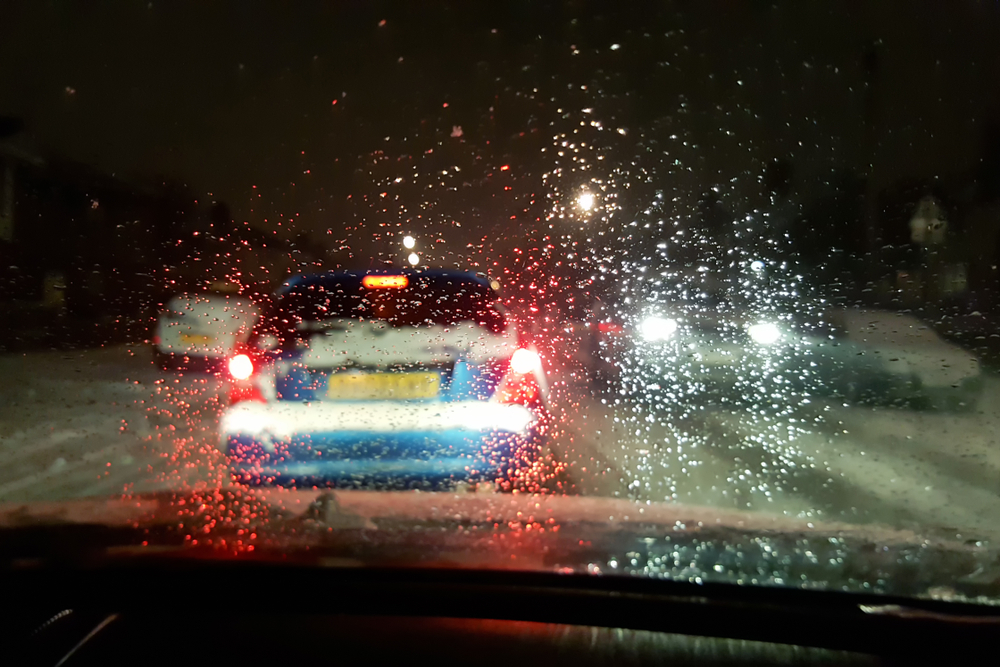
15 breakdowns expected every minute as the UK braces itself for more snow
With heavy snow and wintery showers expected to land across the UK, breakdown cover provider, Green Flag, is urging drivers to be particularly cautious on their travels, with icy roads and poor visibility set to pose a risk to drivers.
Temperatures are predicted to fall below freezing point and the Met Office has issued severe yellow warnings for snow across many areas in the UK. Four inches of snow is expected in some parts of the UK, and a light dusting of snow is expected in London on Thursday morning. As a result of the icy weather, Green Flag is expecting 85,000 breakdowns to occur in the lead up to, and over the weekend (Thursday 27th February to Sunday 1st March) – which translates to 15 breakdowns per minute.
Challenge for drivers
The conditions pose a particularly difficult challenge for drivers, with the combination of poor visibility and less tyre grip on the icy roads, so they should remain extra vigilant when driving. The current predictions come after the disruption that Storm Dennis and Storm Ciara have caused on the roads in recent weeks.
Lucy Davies at Green Flag, commented: “As many drivers already know, snowy conditions can cause real problems when driving, especially in areas where there will be over a centimetre of accumulated snow.”
“Poor visibility caused by the snow, sleet and ice, could lead to reduced vehicle control, so we urge drivers to remain cautious and to avoid the roads wherever possible. If driving is an absolute necessity, it is important that drivers carry out the relevant car safety checks before they leave on any journey and also make sure they are as prepared as possible to withstand the elements, particularly from the wind and flooding.
“At Green Flag, we’re dedicated to getting you to your destination as safely as possible, so we have provided a number of easy and helpful tips to carry out while driving in the winter weather conditions. However, if a breakdown does occur, customers can rest assured as we operate 24 hours a day, 365 days a year.”
Green Flag’s Top Rain and Snowy Weather Driving Tips
- Be prepared: know the weather forecast and take a coat: The rain could be worse along your intended journey, so check the weather forecast, pack a coat and umbrella, and remember your phone. If the roads flood and traffic grinds to a halt, you’ll be glad you have them with you.
- Check your tyres’ tread depth: Of all the checks before setting off, this is the most crucial. Tyres are your connection to the road and are all too often overlooked. The legal tread depth limit is 1.6mm, but we would advise replacing them once they reach 2mm. Also, the tread depth should be even across the width of the tyre, and the air pressure in each tyre must be set correctly according to the vehicle manufacturer’s recommendation – not according to your guestimate!
- Use your lights:Whenever visibility is reduced, use your headlights. Foglamps should only be switched on when you can’t see beyond 100 metres.
- Brake in a straight line:Most drivers have been told this but won’t understand why they should do so. Braking can potentially upset the car the most. Applying the brakes in the middle of a corner could set the car into a spin. Get the braking done before you start turning. You should also always have an input on the car – it should never be coasting through a bend. The car should be braking, turning, then be held on a steady throttle. Only once you start to unwind the steering lock should you accelerate away.
- What to do if you aquaplane:A loss of traction is a scary feeling for any driver. Be smooth with the controls and don’t panic. You can’t afford to ‘startle’ the car. One of the key things is to be to look where you want the car to go – such as the road ahead. That will then help with all the other aspects of safely controlling the situation. If you look at the vehicle travelling to towards you, or a hedge, the chances are you’ll end up hitting it, because when you look at the accident point you are inevitably drawn there.
- Accelerate smoothly:Don’t stamp on the accelerator and expect the car’s electronic safety systems to sort out delivering the power to the wheels. What if the conditions are so bad that these systems become overwhelmed? Always accelerate smoothly.
- Avoid steamy windows by using air-conditioning:Air-conditioning dries air and prevents windows steaming up. Run your air-conditioning system all year round; it’s accepted as good practice to keep it running efficiently.
- Match your speed with the conditions: This is absolutely crucial. We’ve all witnessed it where the conditions are very, very poor and someone speeds past in the outside lane, perhaps because they’re in a large car and feel invincible. Whether that’s the case or not, it’s extremely dangerous. On wet roads, visibility is greatly reduced and stopping distances typically double compared with dry roads so you have to be able to stop in the distance you can see. Of everything, this will make you a safer driver.
- Leave room: In poor driving conditions, give yourself a distance buffer. Everyone around you is likely to be stressed and anxious, and this is the time accidents happen. Leave a four second gap between your car and the one in front. Count it out from the car ahead passing a fixed object like a bridge or lamp post. Holding back also gives you a better view of the road ahead, especially when following a lorry or caravan.
